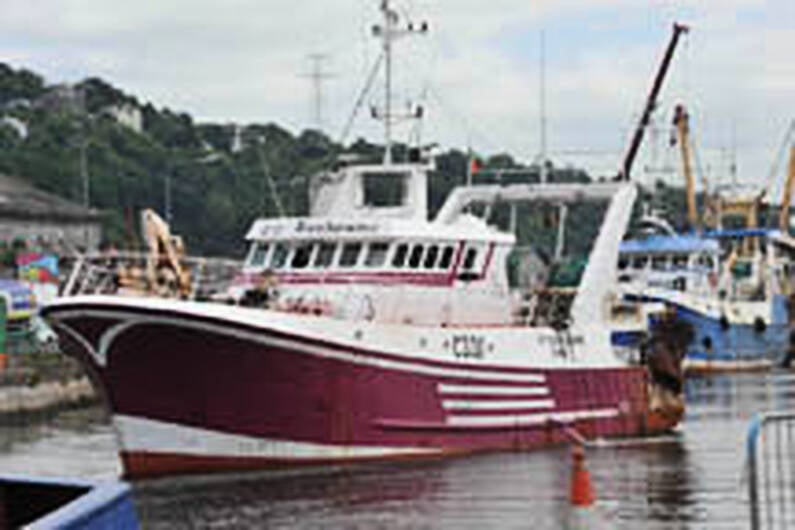In the aftermath of the 2012 drowning off Union Hall, there is now a 24/7 Lifeboat service
In the aftermath of the 2012 drowning off Union Hall, there is now a 24/7 Lifeboat service
ONE man was saved after the Tit Bonhomme foundered on January 15th 2012, but the tragedy was the catalyst for the formation of an inshore lifeboat service that has since saved the life of another man.
John Kelleher, who is the Union Hall lifeboat operations manager, confirmed that a lone kayaker – who had fallen into the middle of the harbour in 2016 and was struggling to contend with an off-shore wind for about an hour and a half – was rescued by the new lifeboat crew and back on dry land 15 minutes after the alarm was raised.
This year alone, the lifeboat – the Margaret Bench of Solihull – was launched 17 times and brought 26 people to safety. According to John, the use of the Union Hall lifeboat means ‘there is now peace of mind in the locality because we have a lifeboat here 24/7.’
After more than a year of hard grieving for the loss of the skipper of the Tit Bonhomme, Michael Hayes – and four of his crew: Kevin Kershaw, Said Alieldeen, Wael Mohamed and Attiy Ahmed Shaban – a committee headed by Paddy O’Donovan set about securing an inshore lifeboat service for Union Hall.
In November 2013, the RNLI agreed to the establishment of a lifeboat station on a trial basis; and in November 2017 Union Hall was declared ‘a permanent asset.’
It means that Union Hall is now one of the RNLI’s permanent stations – something that John Kelleher said ‘is a very positive thing for the community because it is such a large fishing port and such a busy place in the summer time.’
The Tit Bonhomme was rolling heavily and violently when the distress call went out shortly before 6am on the morning of Sunday, January 15th 2012.
Within minutes, the vessel stranded on the rocks on Adam’s Island at the entrance to Glandore Harbour and the side windows of the wheelhouse were shattered by the power of the sea.
More than two hours later, the sole survivor, Abdelbaky Mohamed, was located by Toe Head Coast Guard in a small cove, but it took 26 days before the remains of the five crew were recovered.
Fr Michael Curran was but one of a countless number of people from the wider community that kept up the 26-day vigil on the pier – a vigil that for some was predicated on helicopter, deep sea, coast and cliff searches.
Other people demonstrated their steadfast nature by making cups of tea and delivering hot meals to the makeshift community on the pier: it was the only solace they could offer the families of the missing men, and the only comfort they could provide for the search crews.
Fr Curran, who is a member of the community of Myross Wood, said: ‘The people were wonderful the way they supported the search effort. They opened their homes, and their hearts, to everyone involved.
‘It was amazing,’ said the priest who believes that the long-term impact of the tragedy, and the instinctively kind response to it, means ‘it is a living reality.’
‘That is the way people are,’ said Fr Curran about a village that is so heavily dependent on the fishing industry.
He said: ‘The community responded without counting the cost, but in the long-term you have to count the cost and, in this regard, the RNLI has helped.
‘The RNLI has responded by giving us this precious resource, our new lifeboat, but the community now has to step-up to the mark and continue to fundraise for this vital service.’
John Kelleher confirmed that engineers from the RNLI visited Union Hall at the end of November with a view to building a permanent station by 2020.
‘The next step is to do the surveys and get planning permission. Then, we will have to do a local fundraising drive to help with the cost of it. But that should not be a problem. The community in Union Hall will not be found wanting.’
People will always remember that the lives of five fisherman were lost and that one man was saved in January 2012.
According to Bill Deasy, a retired fisherman who served as a kind of anchor, a steadying influence, for the community’s response during those harrowing 26 days on the pier in Union Hall: ‘It is a tragedy that will never go away – the memory will live on.’
As a community that has around 18 trawlers fishing out of Union Hall, plus five smaller boats engaged in fishing for shrimp, crab and lobster, Bill Deasy said: ‘It will always be a reminder of what can happen at sea.’
But there is another legacy to the Tit Bonhomme tragedy: the safety recommendations contained in the Marine Casualty Investigation Board are being implemented.
Bill Deasy said: ‘All vessels are checked to make sure that everything we should have on board is on board and that we are complying with all of the safety requirements.
‘Trawlers won’t get a fishing licence to go to sea unless they are fully compliant. And now,’ he added, ‘we have an inshore lifeboat that is already saving lives.’







